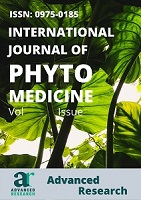
About the Journal
Indexing and Abstracting
Elsevier EMBASE, NLM, CAS, Crossref, Index Copernicus, Worldcat, HINARI, Google Scholar, Open J-Gate, ScopeMed, Science Central, EBSCO, Proquest, New Jour, Scirus, Scivee, Proquest, Academic resources, Citeseer, OAIster, Library Intelligencer, University of Nevado, University of Tsukuba Library, York University, Journalseek,

